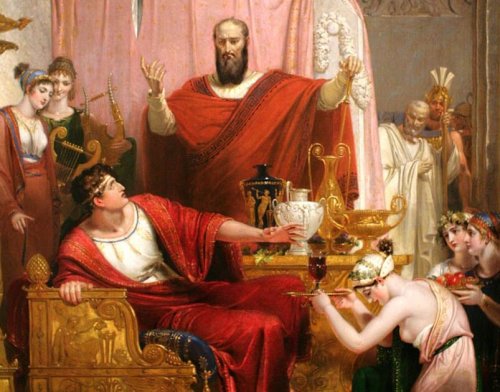Six Risk Classes Named after Greek Mythology Characters


Written and verified by the psychologist Gema Sánchez Cuevas
Risk is the magnitude of potential dangers associated with a specific situation. In other words, whatever harmful thing could happen. Understanding risk can help you avoid it, or at the very least be prepared when the time comes. Following this line of thought, Klinke and Renn identified six risk classes and named them after Greek mythology characters from 700-500 AD.
These mythological figures represent humans’ anxiety about being self-aware and making their own future instead of being subjected to luck and circumstances. There are six different risk classes: Damocles, Cyclops, Pythia, Pandora, Cassandra, and Medusa. These risks are differentiated by the probability that they’ll occur, the damage they can cause, and what we know about them.
Six Risk Classes
Risk Class: Damocles
Damocles stands out in Greek mythology. He was one of Dionysius’s courtiers. He thought that his king was lucky to have power and wealth, and that made him a jealous subject. To teach him a lesson, Dionysius offered to switch places with Damocles for a day.
That same day, there was a grand banquet. Damocles enjoyed being treated like a king. Nevertheless, at the end of the meal, Damocles looked up and saw a sharpened sword hanging directly above his head, tied with a single horse hair. Suddenly, he wasn’t desperate for wealth and power. He immediately asked Dionysius if they could trade places again.
This myth shows us the insecurity of those with great power. Not only can they suddenly lose their power, but they could also lose their lives. This type of danger exists in times of abundance. Its primary characteristics are a low probability that it’ll occur and significant potential damage.
Some examples of this kind of risk are nuclear energy or a meteor impact. It’s very unlikely that these things will happen. However, if they did happen, they would cause a lot of damage.

Risk Class: Cyclops
Cyclops is a one-eyed giant. Because it has reduced vision, its perception of reality is also reduced. This kind of risk is hard to estimate. The potential danger is catastrophic, but there’s no way to measure it.
Earthquakes, volcanic eruptions, and weapons of mass destruction fall into this category. There’s no way to know when or if these things’ll happen, but the damage they cause is extensive.
Risk Class: Pythia
When the ancient Greeks wanted to know the future, they consulted their oracles. One of the most important was the Oracle of Delphi. The spokeswoman for this oracle was priestess Pythia. To make her predictions, she drugged herself with gasses and warned about the future. However, much to the chagrin of everyone who went to see her, her prophecies were always ambiguous.
This is the kind of risk where the magnitude, damage, and probability are all unknown. One example is sudden climate changes or exposure to chemical and biological substances. These risks, like others that have to do with technology (genetic engineering, for example) are hard to estimate.
Risk Class: Pandora
One of the most controversial figures in Greek mythology is Pandora. The gods created Pandora as punishment after Prometheus stole fire to give to humanity. She was so beautiful that no one could resist her. Thus, the gods of Olympus gave her their best gifts. One of those was curiosity, which led her to open the box that contained all the world’s evil.
This story shows us how small things can cause huge disasters. Normally, we discover these kinds of risk once we know it’s too late. One relevant example is environmental damage. Risks such as this one are easily propagated, persist over time, and are irreversible. One example is chlorofluorocarbons. We used to think they were inoffensive, but later found out they were destroying the ozone layer.
Risk Class: Cassandra
Cassandra was a cursed psychic in Troy. Her curse was to make prophecies that no one would ever listen to. She predicted the fall of Troy, but no one paid any attention to her because of her curse. She turned out to be right, as the Greeks eventually came out of the wooden horse they gifted the Trojans and took the city.
These kinds of risks are different than the previous ones. Generally, people know the probability that these things’ll happen and how much damage they cause. However, because there’s a delay between the cause and the consequences, no one appreciates it. Not only that, but these kinds of risk are highly likely to occur and have the potential to cause serious harm. Examples are climate change and the loss of biological diversity.
Risk Class: Medusa
The last Greek mythology character we’ll talk about is Medusa. Medusa was one of the three Gorgon sisters, the only mortal of the three. No one dared to go near her because they said her look would petrify anything who went near her.
The risk class associated with this myth is the things you reject in spite of the fact that they’re fairly innocuous. In other words, although the risk seems very high, there’s no real evidence that it’s particularly dangerous. One example is electromagnetic fields. Their potential for damage is low, but people feel like they’re affected by them.
This text is provided for informational purposes only and does not replace consultation with a professional. If in doubt, consult your specialist.








